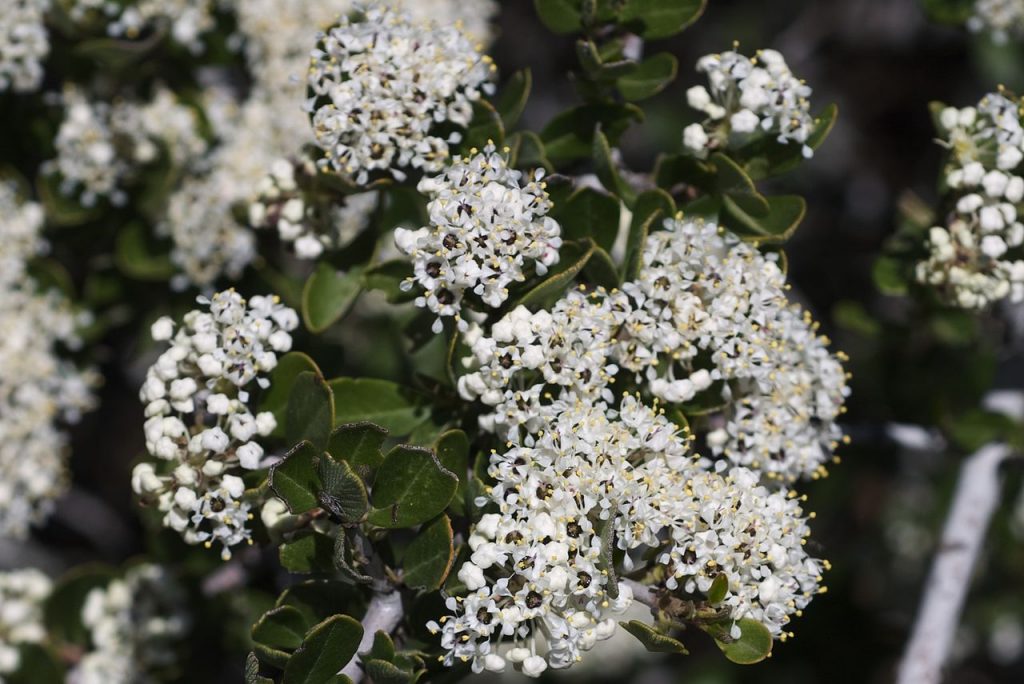
Also known as wedgeleaf ceanothus, this evergreen shrub is native to Oregon, California, and northern Baja California, where it grows in several habitats, especially chaparral. It is a member of the buckthorn family, Rhamnaceae, that also includes California lilac, jujube tree, and crown of thorns. The plant grows up to 12′ tall and has thorny, rigid branches that grow at right angles to the main stem. The small spoon-shaped, fleshy leaves are tough and stiff, and may have toothed margins. In early to mid summer, short, thick-stalked racemes of rounded bunches of tiny fragrant flowers appear. Each flower is about .2″ wide creamy white, sometimes tinted with blue or lavender, and is attractive to bees and butterflies. The fruit is a round capsule with horns and contains 3 shiny dark seeds that are forcibly expelled when the capsule opens. Fire is needed for germination and the seeds may lie dormant in the soil for a long time. Buckbrush is valued for bank stabilization, as a larval host for several butterflies, and as cover for wildlife. The genus name, Ceanothus, is from the ancient Greek κεάνωθος (keanōthos), the name of a thistle. The specific epithet, cuneatus, is the Latin word meaning wedge-shaped, and refers to the leaf shape.
Type: Evergreen shrub
Outstanding Feature: Drought tolerance; fragrance flowers
Form: Rounded to sprawling
Growth Rate: Rapid to moderate
Bloom: Racemes of rounded bunches of tiny ,fragrant, creamy white flowers sometime tinged with blue and lavender, in early to mid summer
Size: 5-12′ H x 5-12′ W
Light: Full sun
Soil: Sandy to rocky, dry, very well-drained
Hardiness: Zones 8-11
Care: Low maintenance
Pests and Diseases: None of significance
Propagation: Seed (soaked and stratified), semi-hard cuttings in summer, root cuttings in late fall to early winter
Outstanding Selections: ‘Snowball’
Photo Credit: Eric in SF Wikimedia Commons